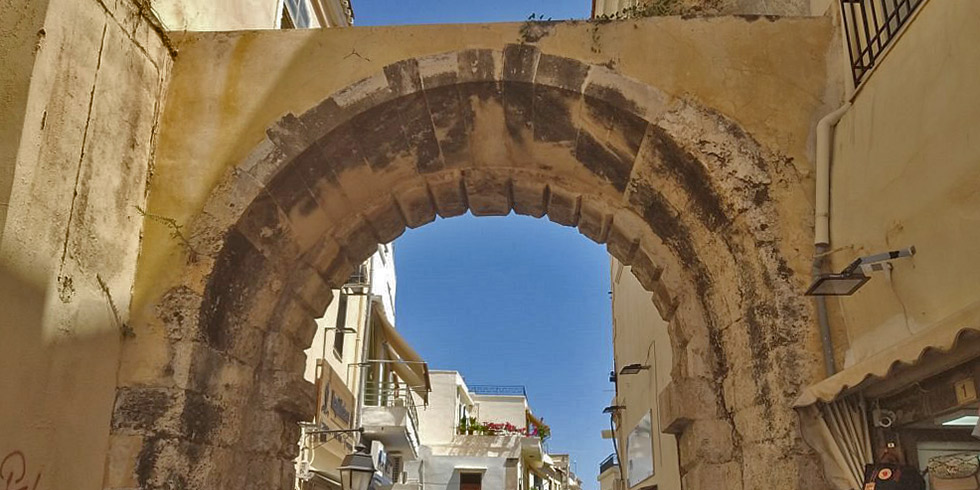The Guora Gate is all that is left from the Venetian fortification of Rethymnon. This magnificent gate, which was named after the Venetian rector (= governor) Giacomo Guoro, it has an opening 2,60 m wide. It used to be the main entrance to the walled city and it led to the central square, where were the most important public buildings of Rethymnon (the Loggia, the Rimondi fountain, the Clock tower).

The Venetian walls of Rethymnon were built in 30 years (1540-1570), based on designs by the chief-engineer Michele Sanmicheli, which were simplified, though, as works progressed.
The walls stretched from the eastern sandy beach, where the bastion of Santa Barbara could also be seen, and continued at a 90 degree angle to the western rocky shore, until the foot of the Paleokastro hill (where the Fortezza is). There were another two, secondary gates: the Sand Gate (Pili tis Ammou - just before the Santa Barbara bastion) and the Dello Squero Gate (opposite the contemporary Municipal Park). The city remained unprotected from the seaward side, though; so, it was not secure enough during the raid made in 1571 by Uluj Ali, which led to its destruction.
As a result, the walls were abandoned and the fortification of Paleokastro was decided upon, so that the city could be protected by the Fortezza. When, under the threat of a Turkish invasion, it was understood that this was not enough, an effort was made to repair the walls; they proved to be quite strong, after all, since they withstood the siege of the Turks for 22 days.
Only the Guora Gate, across the Four Martyrs (Tessàron Martίron) square survives today. Locals call it Megali Porta (= big gate), and it still is the entrance to the old town of Rethymnon.



